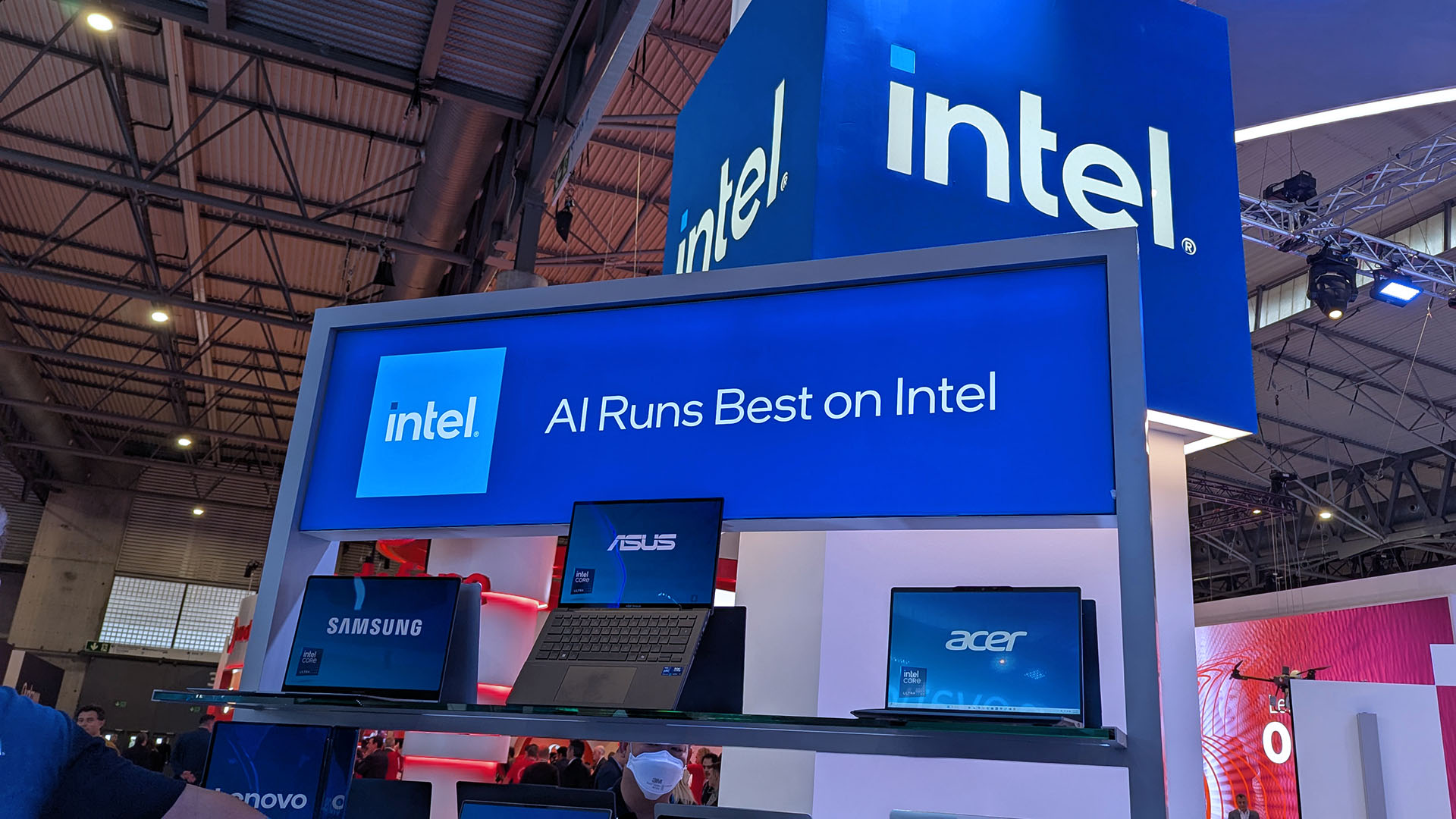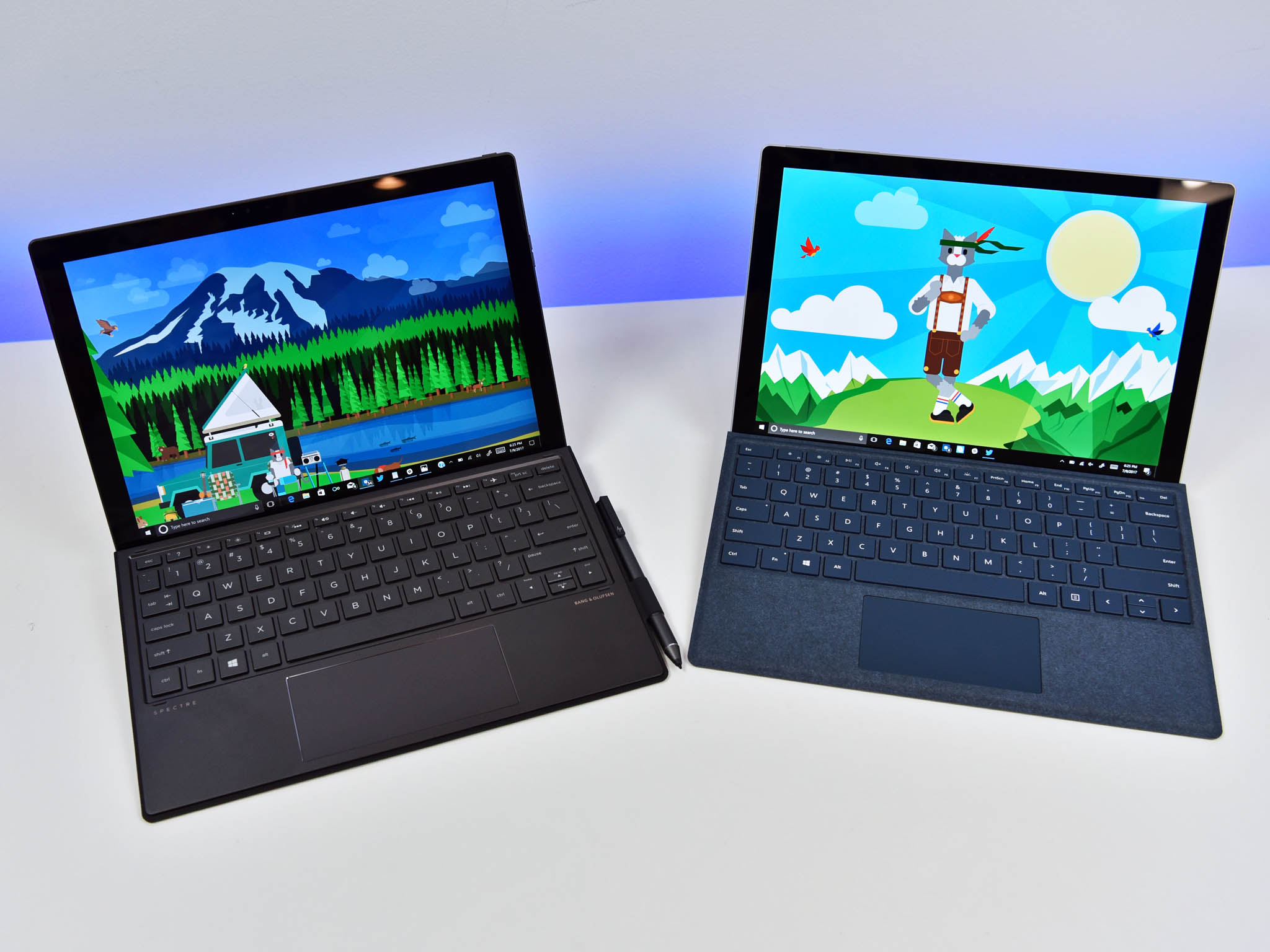
HP's Spectre x2 is aimed at taking on Microsoft's outstanding 2-in-1 device, the Surface Pro. Like the latter device, the Spectre x2 has a removable keyboard, a kickstand to prop it up when you're in need of a notebook, and a beautiful tablet with a display that works with a pen for Windows Ink.
While these devices are really quite similar, it's the differences that you'll want to take a look at when deciding which one is best for you. Let's do that now to see which one gives you more for your money.
Performance

The HP Spectre x2 is available with either an Intel Core i5-7260U or Intel Core i7-7560U processor (CPU). The Surface Pro has completely different options; you can get an Intel Core m3-7Y30, an Intel Core i5-7300U, or an Intel Core i7-7660U.
The Core m3 CPU found in the Surface Pro is a decent option if you aren't too concerned about performance, plus you'll save a good chunk of change. It also has the added benefit of sucking up less battery power. Compared to the 15W U-series CPUs, the Core m3 is set at 4.5W.
Geekbench 4.0 scores for the Core i7 configurations of each of these laptops shows that the Surface Pro slightly edges out the Spectre x2.
| Laptop | CPU | Single core | Multi core |
|---|---|---|---|
| Surface Pro | Core i7-7660U | 4,513 | 9,346 |
| HP Spectre x2 | Core i7-7560U | 4,383 | 8,426 |
- See our Microsoft Surface Pro review
- See our HP Spectre x2 review
Disregarding the Core m3 CPU, the processing performance difference between the Surface Pro and the Spectre x2 would probably go unnoticed. However, if you're going to be using your laptop for a task that requires some graphics power, do note that the Core i5 and Core i7 Spectre x2 configurations come with integrated Intel Iris Plus Graphics 640. You can get the same integrated GPU in the Core i7 model of the Surface Pro, but that's where the similarities stop. The Core m3 model comes with Intel HD Graphics 615 and the Core i5 model come with Intel HD Graphics 620.
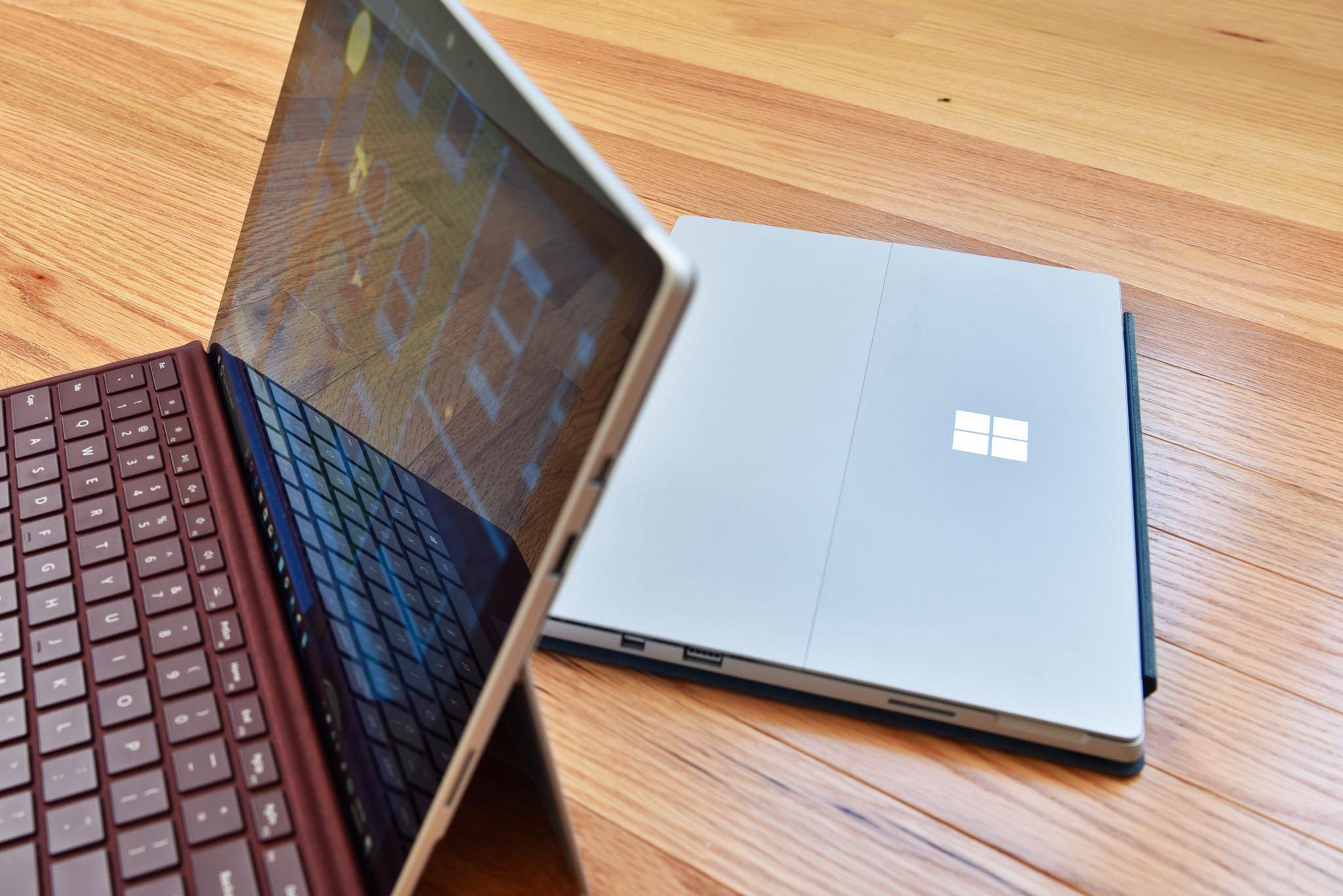
When it comes to RAM, both devices can have up to 16GB, and both devices are still using LPDDR3-1866MHz. However, only the Surface Pro is available in a 4GB option, whereas the Spectre x2 only goes as low as 8GB. Both laptops have plenty of storage options, starting at 128GB SSDs all the up to 1TB.
Get the Windows Central Newsletter
All the latest news, reviews, and guides for Windows and Xbox diehards.
Bottom line: Both PCs are a basically a draw at higher configurations, but the Surface Pro is available in a lower configuration if you aren't concerned about high performance.
Display
Both of these devices have outstanding displays, so much so that it would be hard to choose between the two based on the screen alone. Both have 3:2 aspect ratios (ideal for a tablet), but the Spectre x2 does have a slightly higher resolution at 3,000 x 2,000 compared to the Surface Pro's 2,736 x 1,824.
As for bezels, the Surface Pro's is a hair thinner, but on a device like this, it's alright to have a decent size to hold onto when in tablet mode. Each device has enough room at the top for an IR camera compatible with Windows Hello for near-immediate logins.
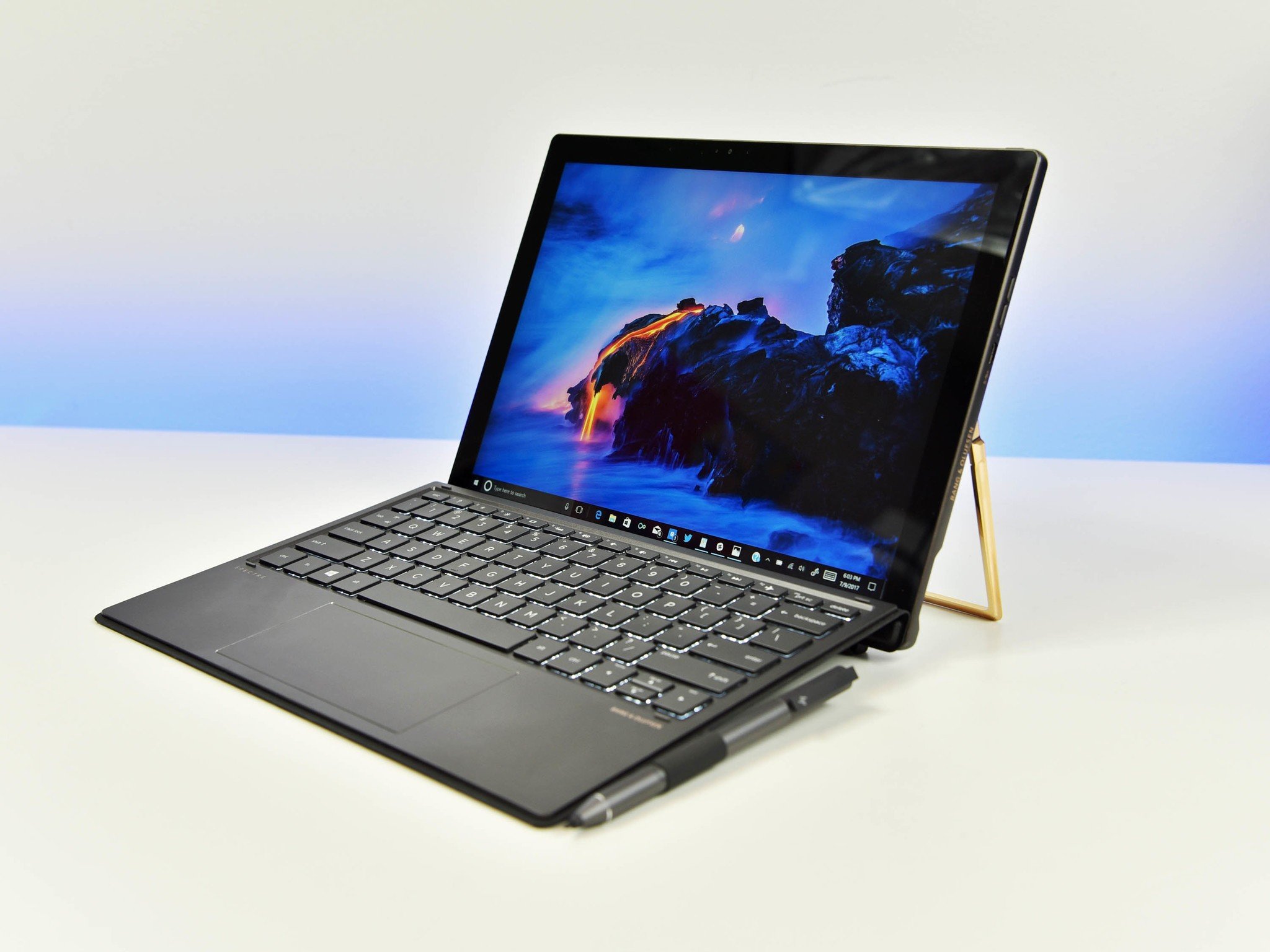
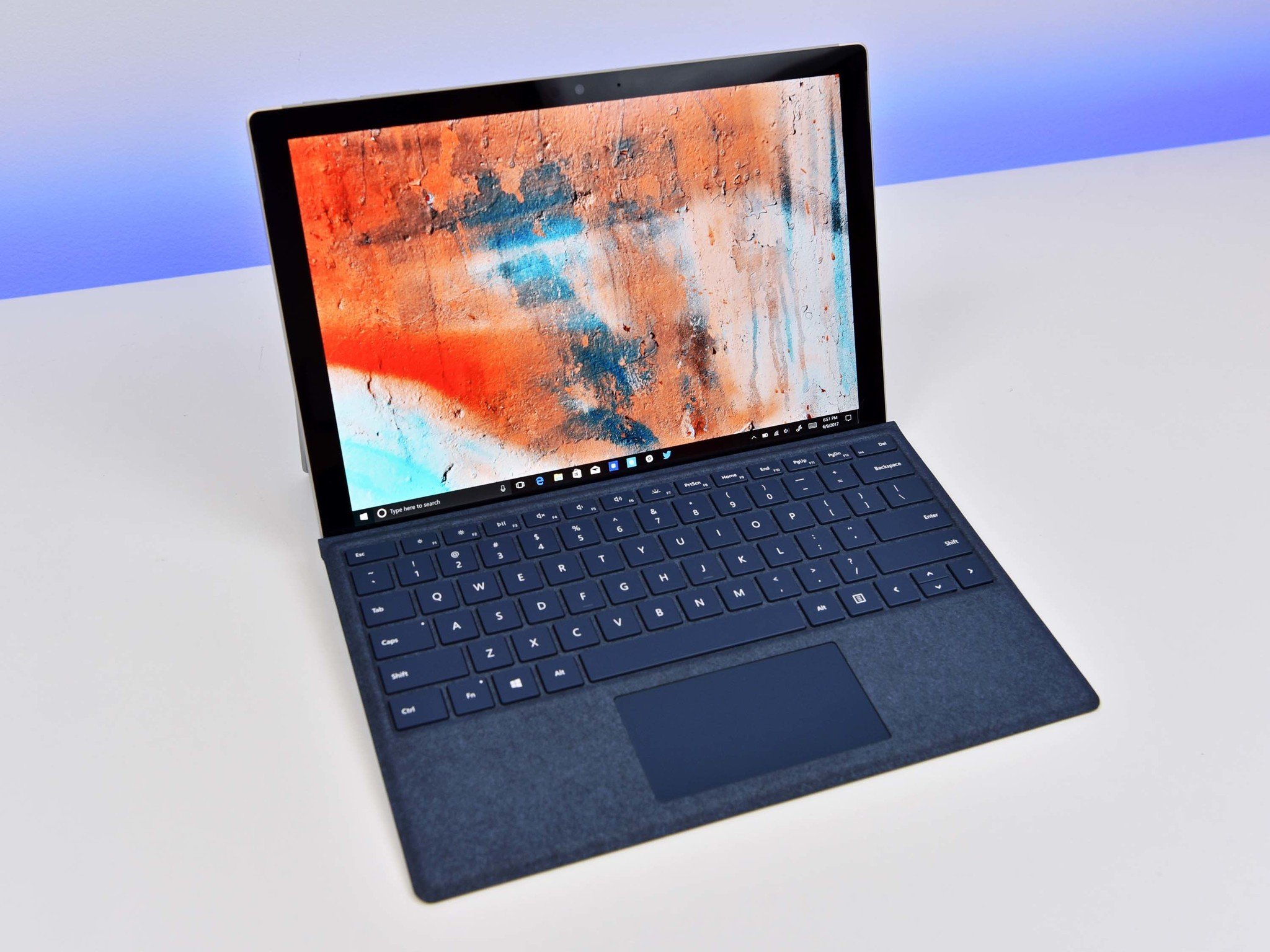
Color and brightness are both on par, and both have pen support. HP includes their Active pen with the price of the laptop, which Microsoft does not; a Surface Pen is an extra $100. If you're an artist, you'll want to stick with the Surface Pen's 4,096 levels of pressure, which blows away the 1,024 levels in the HP pen. For regular use, either one will do you well.
Bottom line: The displays here are both beautiful, but the Spectre x2 does include a pen. However, the Surface Pen is more suited for artistry.
Design and function
Microsoft's Surface Pro line is pretty much the golden standard when it comes to 2-in-1 devices, and many other manufacturers recognize this and attempt to emulate it. Here we have two laptops with detachable keyboards, a kickstand on the back of the tablet to prop it up when using it as a notebook, and a slim body that is the right weight to be used comfortably as a tablet.
The kickstand on the Spectre x2 is more of a U-shaped bar that hides away nicely when not extended, and it does provide decent stability wherever you use it. The Surface Pro's kickstand is more of a flat plate that also hides nicely — both kickstands can extend to 165 degrees.
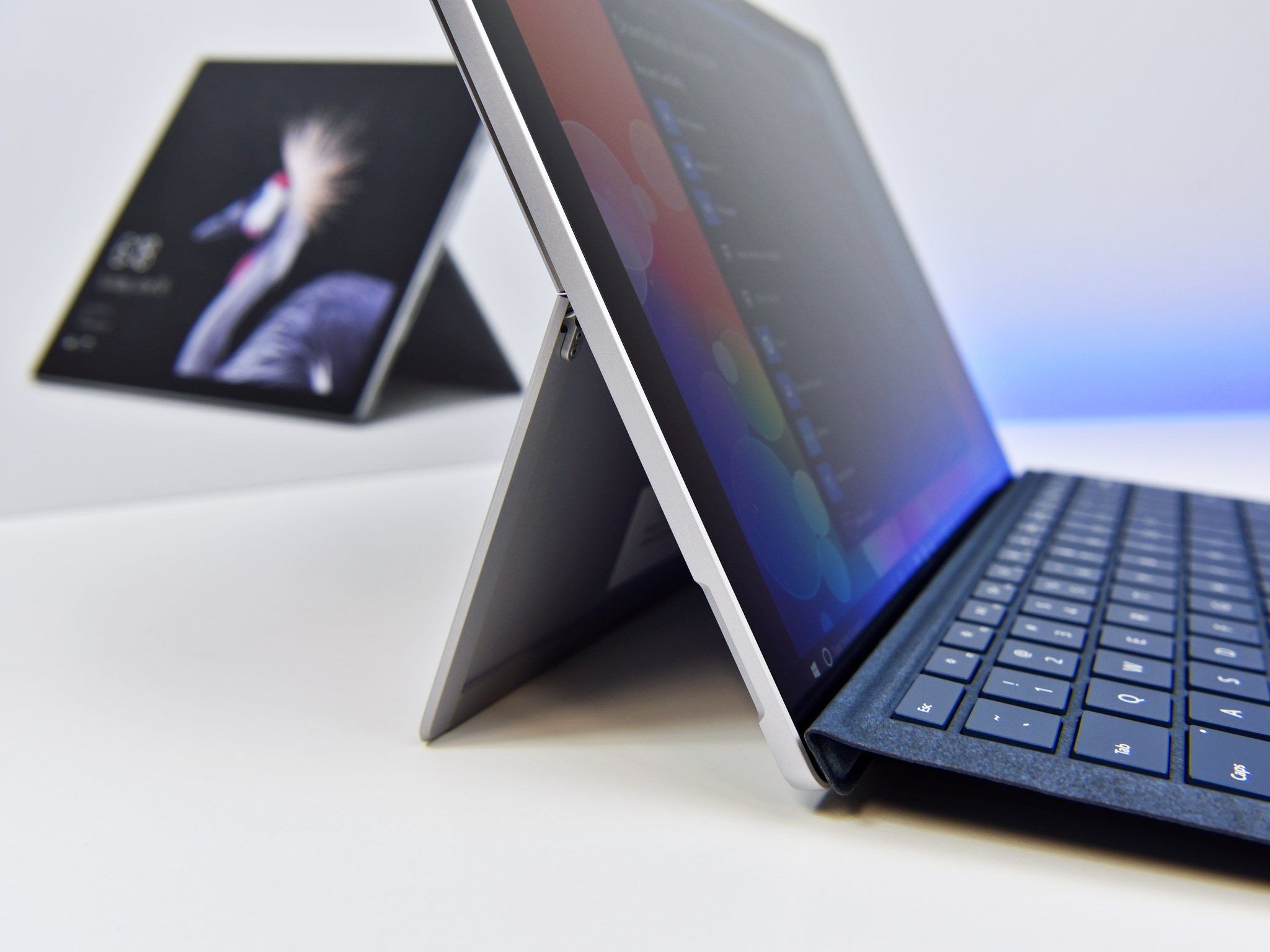
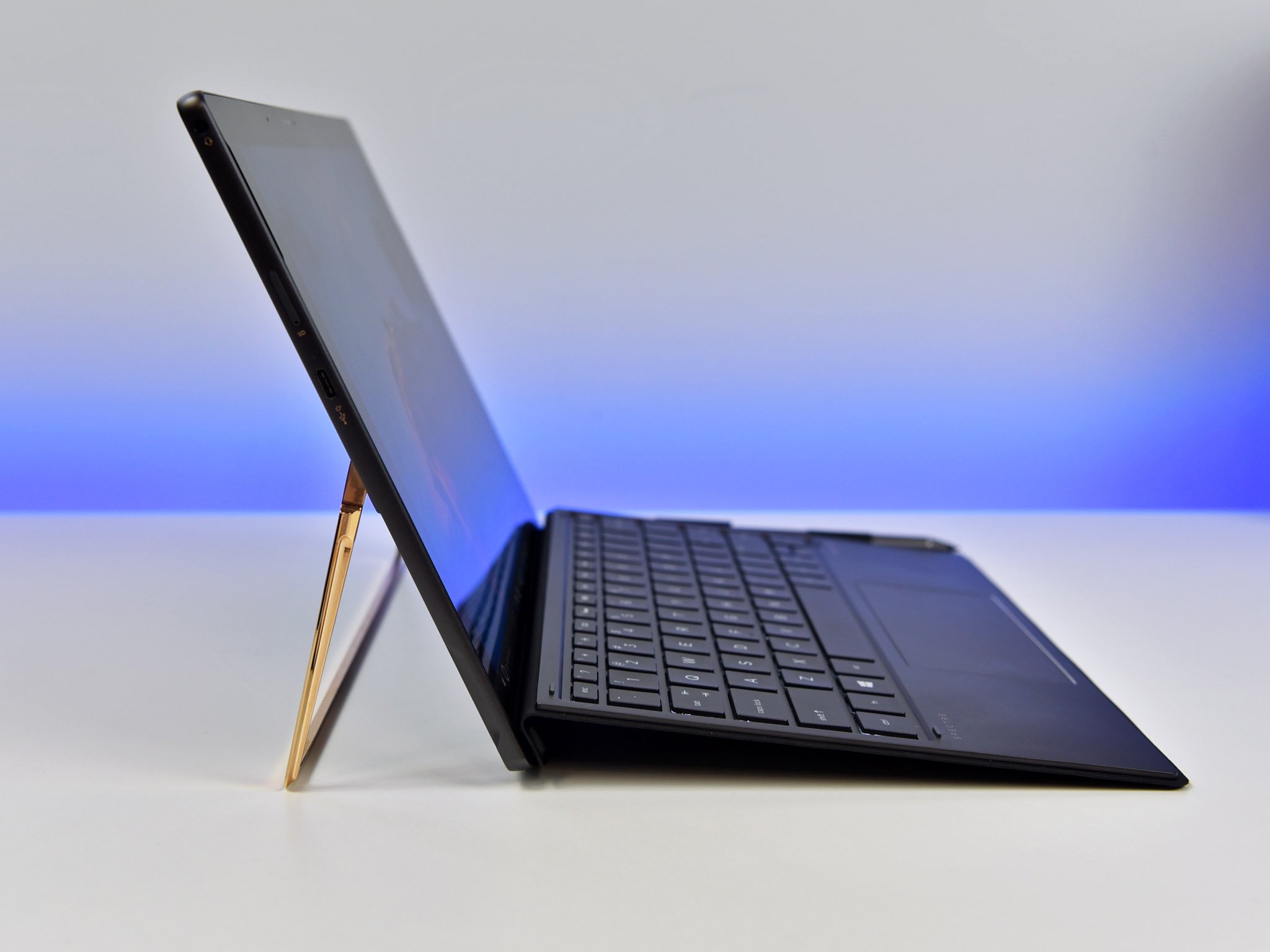
Weight is an important factor for many people, but again these two devices are almost identical. With the keyboard attached, the Surface Pro weighs in at 2.4lbs (1.09kg), while the Spectre x2 weighs 2.5lbs (1.13kg). The Spectre x2 is slightly thinner at 0.5 inches (12.7mm) compared to the Surface Pro's 0.6 inches (15.24mm), again a negligible difference.
Deciding on one of these laptops based on design might come down to either port selection or the color — the Spectre x2's dark ash is a nice change from the Surface Pro's standard silver color. For ports, Microsoft has stuck with one USB-A 3.0, a Mini DisplayPort, a microSD card reader, and a 3.5mm jack. HP, however, is looking to the future, offering two USB-C, a microSD card reader, and a 3.5mm jack.
The lack of USB-A on the Spectre x2 might be a killer for some of you, but HP does include a USB-C to USB-A adapter. If you're still using plenty of older peripherals that require USB-A and you also hate carrying around adapters, your best bet is the Surface Pro. Likewise, if you're using newer peripherals, the Spectre x2 is a better choice.
Bottom line: Both devices are similarly designed, to the point where the choice might come down to color or port selection.
Battery
Those of you who work far from power outlets on a regular basis will want to seriously consider the Surface Pro. Microsoft claims up to about 13 hours of life from a charge, but you can realistically expect between eight and nine hours of regular usage. That's pretty decent life from a device this slim.
The Spectre x2's battery can realistically hit between six and seven hours of standard usage. That's not bad, and you can get about a 50-percent charge from 30 minutes plugged in. Those aren't terrible numbers, but they don't match the Surface Pro.
Bottom line: The Surface Pro is the clear winner here.
Price
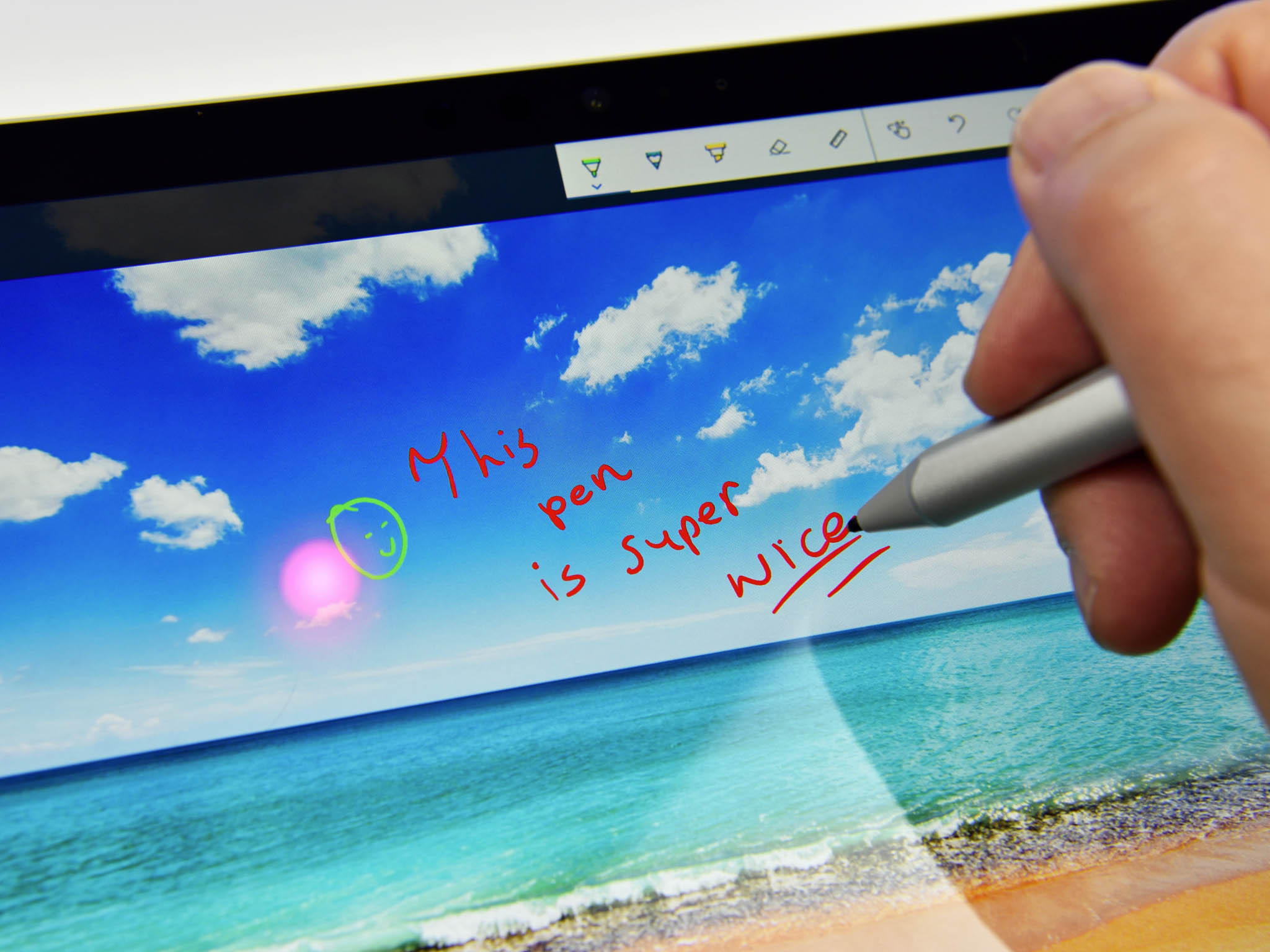
The baseline Surface Pro with an Intel Core m3 CPU costs about $800. That's the cheapest option you'll find between these two devices, but remember that the Spectre x2 starts at a Core i5 configuration.
Comparing the mid range, a Surface Pro with a Core i5 CPU, 8GB of RAM, and a 256GB SSD costs about $1,300. That's without a Surface Pen and without a Type Cover keyboard and touchpad. The total cost there, all decked out, is more like $1,560.
If you grab a Spectre x2 with a Core i5 CPU, 8GB of RAM, and a 256GB SSD, you're going to pay about $1,170. That includes the pen and keyboard, and that's about a $400 difference.
Want to go top configuration with a Core i7 CPU, 16GB of RAM, and a 1TB SSD? A Surface Pro will set you back about $2,700 (without the Surface Pen and Type Cover, an extra $260), and an HP Spectre x2 will cost more like $1,970. That's almost a $1000 difference when you're all said and done.
Bottom line: You can save a lot of money by going with a low-end Surface Pro, but as you go with more powerful hardware, the HP Spectre x2 will save you a ton of money.
HP Spectre x2 vs. Microsoft Surface Pro: Conclusion
It's hard to explicitly recommend one of these devices — they're both that nice. However, there are some defining features that might help you ultimately decide. Need a device with USB-C? Go with the HP Spectre x2. Need a device with a longer battery life? Go with the Surface Pro.
If it's the price that has you deciding, you can go with a baseline Surface Pro configuration for cheaper. As you scale up, however, the HP Spectre x2 offers the best value for your buck.
More laptops
Not convinced either of these laptops is for you? Be sure to check out our laptop buyer's guide!
See our laptop buyer's guide

Cale Hunt brings to Windows Central more than eight years of experience writing about laptops, PCs, accessories, games, and beyond. If it runs Windows or in some way complements the hardware, there’s a good chance he knows about it, has written about it, or is already busy testing it.
